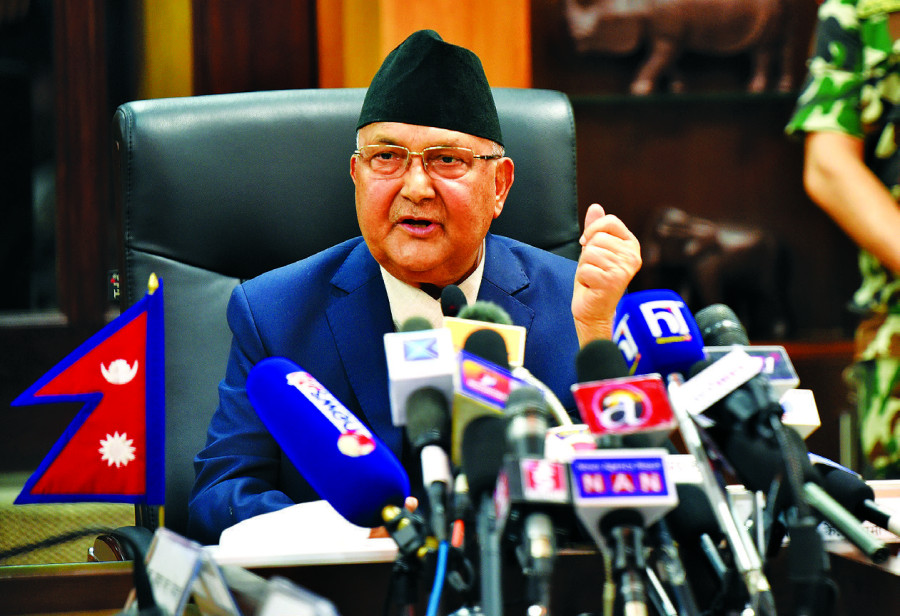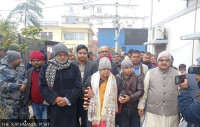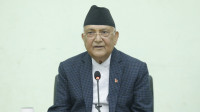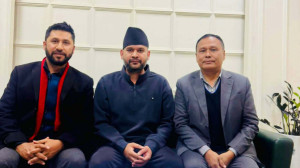Politics
Bending constitutional provisions for government formation, the KP Oli way
Constitution drafters failed to foresee that prime minister elected under 76 (1) would dissolve the House after three years at the helm, as that article clearly ensures full term.
Binod Ghimire
Prime Minister KP Sharma Oli lately has made some experts on constitutional affairs go silent—a case in point is Subas Nembang—and others take pains to explain what the provisions of the Nepal constitution actually mean.
The provision at hand now is Article 76, which deals with the process of forming a government. There are four provisions in the constitution for the appointment of prime minister, and so far, three have been exhausted. And on all three occasions, Oli was appointed. The fourth provision has not come into play. Just before it could be implemented, Oli, after seeing little prospect of returning to the helm, dissolved the House of Representatives altogether, in a move constitutional experts say is unconstitutional, illegitimate and immoral.
Questions are now being asked whether Nepal’s constitution envisioned the same person as prime minister under all four provisions.
Experts, unless they are Oli’s close aides, say “No.”
According to those who were part of the constitution writing process, given a vicious cycle of instability Nepal had gone through, drafters were extremely careful to write provisions which would ensure political stability.
“That’s how Article 76 (5) was written,” said Chandra Kant Gyawali, a senior advocate who specialises in constitutional law. “Oli, however, misused the provisions, as he was bent on dissolving the House.”
Article 76 (5) is the last of the provisions in the constitution for the formation of a government.
Most of the constitutions from the democratic countries envision three types of government—majority, coalition and minority.
Article 76 (1), Article 76 (2) and Article 76 (3) of Nepal’s constitution were, according to experts, hence written accordingly.
Oli was first appointed prime minister in February 2018 under Article 76 (2), to lead a coalition government as his party, the CPN-UML, which had won 121 seats in the lower house in the 2017 elections, had the backing of the Communist Party of Nepal (Maoist Centre), which had won 53 seats.
Three months later, the UML and the Maoist Centre merged to form the Nepal Communist party (NCP), and the unified party hence commanded 174 seats in the House, close to two-thirds.
Oli thus became prime minister under Article 76 (1), leading a majority government. It looked like Nepal’s political stability dream had been achieved. Oli was set to govern for the full five-year term, something that had not happened in Nepal in over two and a half decades.
But Oli’s decision to prematurely dissolve the House on December 20 suddenly set in motion a chain of events, raising the spectre of political instability which the drafters had dreaded the most while writing the charter.
Oli’s December 20 decision on March 7 culminated in the invalidation of the Nepal Comunist Party (NCP).
After he failed the trust vote on March 10, he was once again appointed prime minister under Article 76 (3) to lead a minority government.
But without fulfilling the constitutionally mandated condition of confidence motion, Oli sought to become prime minister under Article 76 (5).
Those who were part of the constitution-drafting process say Oli had already violated the constitution by getting appointed repeatedly under the first three articles, and staking claim to the government under Article 76 (5) was out and out illegitimate.
Som Prasad Pandey, who was a member of the constitution drafting committee, said the provision [Article 76 (5)] was envisioned to ensure the full term for the House, as it gives room for formation of a new government after Article 76 (3) fails.
Article 76 (3)’s relevance comes in the initial days, immediately after the election of the House, when it has to elect a prime minister, according to Pandey.
Article 76 (5) makes any member, even someone who is the only member of any party or any independent member, of Parliament eligible to lay claim to the prime ministerial post.
“The motive behind having the provision is to keep the maximum options open for the House to produce a government,” Pandey told the Post. “The provision comes into play when a government cannot be formed under Articles 76 (1), 76 (2) and 76 (3) by parties.”
After Oli failed the confidence vote on May 10, the President had given until 9pm of May 13 to form a government under Article 76 (2), thereby asking any party that could prove a majority with the support of two or more parties.
The parties in opposition failed. Whether Oli should have been automatically appointed under Article 76 (3) has become a contentious issue now, as it meant repeating the same person, on whom the House just a few days ago had shown no confidence, as prime minister.
Some experts say if the constitution had been followed in letter and spirit, Article 76 (5) should have been invoked, thereby asking any member of the House to stake claim to the prime ministerial post by proving a majority. A prime minister appointed in this manner needed to seek the vote of confidence within 30 days, failure of which would have led to House dissolution.
Bhimarjun Acharya, a senior advocate who also specialises in constitutional law, had told the Post on May 13 that the President should have invoked Article 76 (5) directly without bringing Article 76 (3) into play, as it was unnecessary because it was paving the way for the same person to be appointed as prime minister.
But then questions would arise why Article 76 (3) was written then.
Those from the drafting committee say the constitutional provisions could have been written in a clearer way, so as not to let anyone misinterpret it.
Rewati Raman Bhandari, also a member of the constitution drafting committee, said during the drafting process, they were clear that those articles would not allow the same person to get appointed again and again.
Drafters, however, failed to foresee a situation that a prime minister elected under Article 76 (1) would dissolve the House after three years at the helm, as that article clearly ensured the full term.
“We wrote the provisions in good faith. We assumed that if all three articles failed to produce a government, Article 76 (5) could, as there could be someone in the House, a politician with high moral standing, who could independently garner a majority to lead the government,” Bhandari told the Post. “If that too failed, the House dissolution option was there. Oli’s claim to form a government is totally invalid, but Article 76 (5) was also not envisioned for any other leader like Sher Bahadur Deuba.”
After Oli prodded the President to invoke Article 76 (5), the opposition led by Nepali Congress laid claim to the government under the party chief Deuba.
The President, however, declined. After Oli and Deuba sought to form a government, the President on Friday night said claims made by both were insufficient. Hours later, she dissolved the House on the recommendation of Oli.
The opposition alliance on Monday filed a petition at the Supreme Court with the signatures of 146 members challenging the House dissolution.
Acharya, the constitutional expert, said there is no doubt that Oli has bulldozed the constitution.
“Oli was by no means eligible to lay claim to a new government under Article 76 (5),” Acharya told the Post. “The Supreme Court must clearly say that the same person in the same tenure of the House cannot be repeated as prime minister under all four provisions.”




 15.24°C Kathmandu
15.24°C Kathmandu














